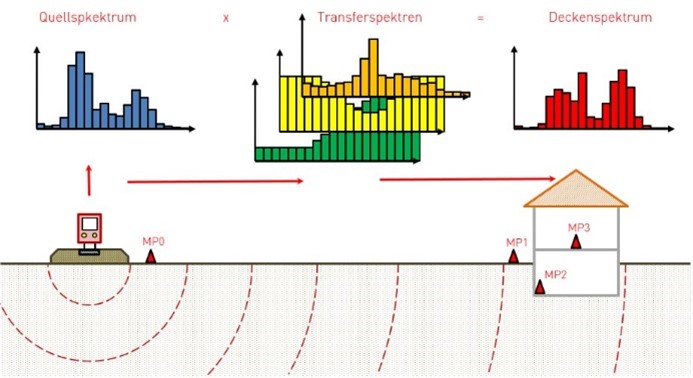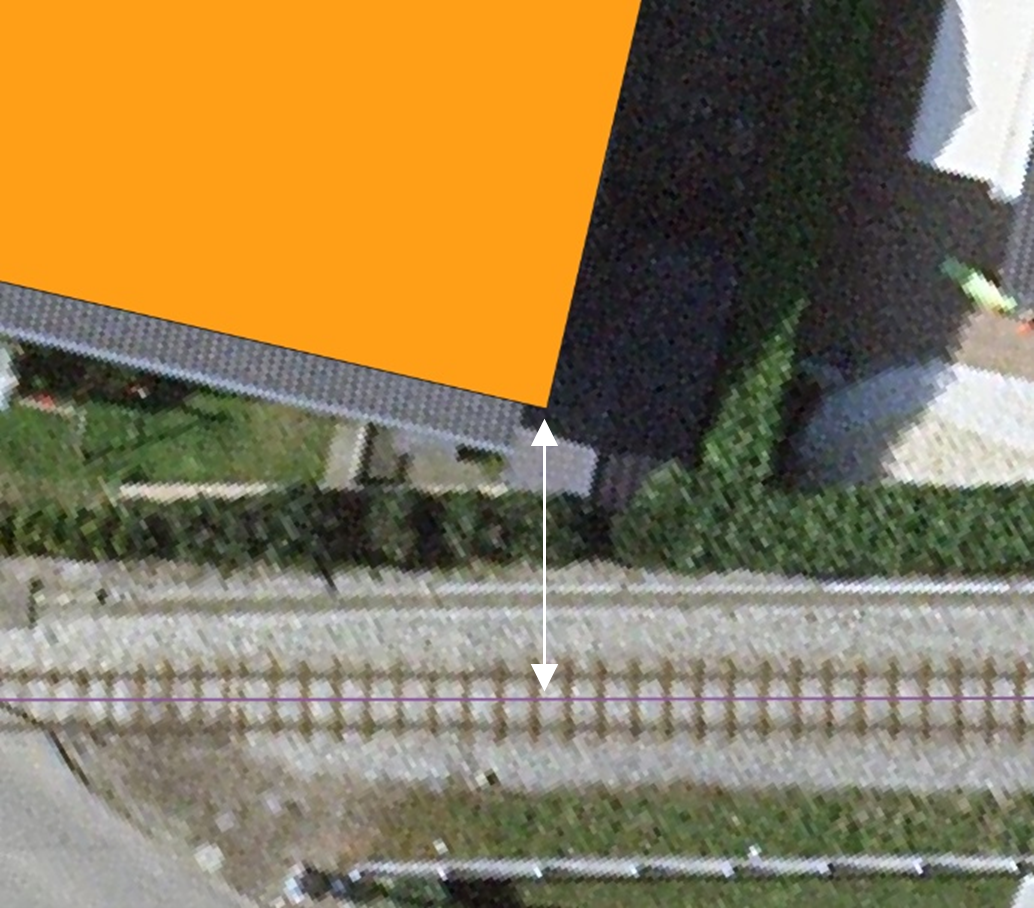Vibra, as in Vibration, Vibra as in VIBRA-1
Imagine wanting to improve the rail connection between two cities. Maybe you propose increasing the number of tracks. Maybe you're thinking of designing a new route, crossing the towns in tunnels or on the surface. Perhaps you simply want to increase train speed or frequency.
But beware of vibrations! By modifying or creating a new installation, you could be generating new vibrations that could disturb local residents, according to the directive on the assessment of vibration and structure-borne noise from rail transport installations (EVBSR). To ensure that you comply with this directive, you should carry out a VIBRA-1 analysis as a first step. You might ask, "What is VIBRA-1? What is this directive?
What is VIBRA-1?
When a train passes by, a vibration is propagated from the source to the buildings (near and far). The vibration is transmitted to the building and continues through the floors, ending up in the bedrooms.
 Source: ZC Ziegler Consultants AG
Source: ZC Ziegler Consultants AG
In this context, the directive sets several thresholds in order to avoid potential discomfort for the residents of these buildings. To check that modifications or the creation of a new roadway will not cause such inconvenience, run the VIBRA-1 software. And off you go for an initial analysis!

Figure: VIBRA-1 software
To begin, you need:
- to define the source: the type of trains with their respective frequency, length and speed.
- to define propagation in the ground: the geology of the location (tunnel, soft ground or hard ground), the presence or absence of switches, the distance between the rails and the building,
- to define transfer between the ground and the building: the type of vibration coupling between the ground and the building foundation. This defines how the vibrations are transferred from the ground to the building.
- to define propagation within the building: the type of construction (concrete slab, wooden beam) in question.

Figure: Measuring the distance between the building and the rails
Once you have entered these data into the software, VIBRA-1 will start the calculations for you! It contains a database of theoretical vibrations for each type of train and simulates vibrations at source and propagates them through the ground to the building. VIBRA-1 also contains a database of typical ground-to-building transfer functions and transmission to upper floors depending on the type of construction. VIBRA-1 can empirically calculate vibrations in the middle of a room on an upper floor. And that's it! From the empirical vibrations on the floor, a quantity called KB (for Kennwerte für Beurteilung von Erschütterungen), which is a characteristic for evaluating vibrations, is calculated over time. From this quantity, VIBRA-1 deduces a maximum KBFMAX and a weighted root mean square (RMS) KBFTR.
Evaluation
These quantities are compared with the thresholds defined in DIN 4150-2, the standard on which the EVBSR directive is based: Ao = maximum limit, Au = minimum limit, Ar = "average value". As VIBRA-1 is highly empirical, the thresholds are divided by 2 to guarantee a safety margin. Three scenarios emerge from the calculations:
If the maximum KBFMAX is greater than half of Ao/2 (yikes!), your project does not pass in its current state. If the maximum KBFMAX is less than half of Au/2 - this is the jackpot: no need to go any further - your project is accepted. If the maximum KBFMAX is between Au/2 and Ao/2, you need to take KBFTR and check that it is smaller than or equal to Ar. If it is, your project is validated. If your project does not pass at this stage, don't panic. There's VIBRA-2! Instead of applying theoretical vibrations, real on-site measurements give a more precise idea of how vibrations are transmitted between the source and the floors of the building, improving the accuracy of the study. These measurements are carried out using geophones (commonly used are Syscom or Menhir). But all this will be explained in a later article. In the meantime, to give you an idea of how such measurements are carried out, here's a short video:
Need a vibration study for your project? Don't hesitate to contact us:
Nadège Marchiando
nadege.marchiando@grolimund-partner.ch
032 720 26 06
Andreas Schluep
andreas.schluep@grolimund-partner.ch
031 356 20 10
/www.gundp.ch/file/2589/vibration-vorsicht-vor-ueberschreitung-bahngleis.png)
/www.gundp.ch/file/1297/Tram_Winter_quadratisch.jpg)
/www.gundp.ch/file/877/IMG_20211019_134602_quadratisch.jpg)
/www.gundp.ch/file/2914/blog_climate-change_heat-in-cities.png)